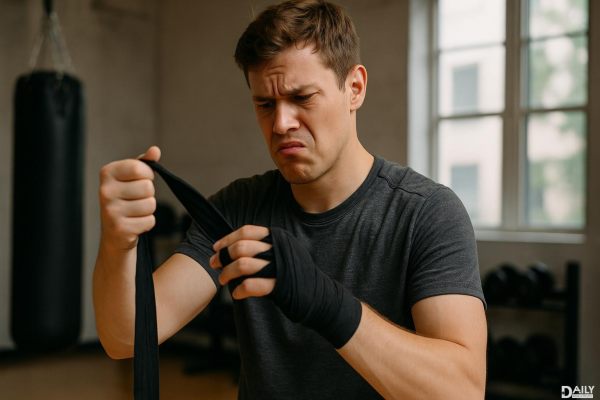If you're new to boxing or MMA and struggling with hand wraps, don't sweat it—you're not alone. Hand wraps might seem like a tangled mess of fabric at first, but they're your first line of defense against injuries like sprains, fractures, and even long-term joint damage. The good news? With a little practice and the right technique, you'll be wrapping like a pro in no time. Let's break it down step by step so you can hit the bag (or the ring) with confidence.

Think of hand wraps as the unsung heroes of combat sports. Sure, gloves get all the glory, but without proper wrist and knuckle support, you're asking for trouble. Your hands are made up of tiny bones, tendons, and ligaments—none of which are built to withstand repeated impact. Wraps stabilize your wrist, cushion your knuckles, and keep everything aligned so you can throw punches without worrying about waking up the next day with hands that feel like they’ve been through a meat grinder. Plus, they absorb sweat, keeping your gloves fresher longer (because nobody wants to smell like a locker room).
Not all wraps are created equal. The two main types are traditional cotton wraps and elastic (or "Mexican-style") wraps. Cotton wraps are stiffer and offer more structure, while elastic wraps mold to your hand for a snugger fit. Beginners often prefer 180-inch wraps—they’re long enough to provide full coverage without being overwhelming. Look for breathable material with a thumb loop (trust us, it makes wrapping way easier). And skip the cheap, flimsy ones—your hands deserve better.
Start by threading the thumb loop around your thumb, then pull the wrap across the back of your hand toward your wrist. Make three passes around your wrist to lock it in place—this is the foundation. Next, spiral the wrap over your knuckles three times for padding. Then, weave between your fingers: start at the base of your thumb, loop around your pinky, back to the thumb, and repeat for each finger. This "X" pattern adds stability. Finish by securing the wrap around your wrist again and fastening the Velcro. Pro tip: Keep it snug but not tight enough to cut off circulation. If your fingers turn purple, you’ve gone too far.
Too loose? Your wraps will shift mid-training, leaving your knuckles vulnerable. Too tight? Hello, numbness. Another rookie move: skipping the finger weaves. Without them, your hand can buckle on impact. And don’t just focus on the knuckles—your wrist needs love too. If you’re constantly adjusting your wraps, rewatch the steps or ask a coach to demo it. Practice at home before hitting the gym; nobody masters this on the first try.
Hand wraps aren’t immortal. Over time, they stretch out, lose elasticity, or start smelling like a science experiment gone wrong. If they’re fraying, stiff, or permanently funky, it’s time for a new pair. Most last 6–12 months with regular use. Pro move: Hand-wash them in cold water (machine washing can wreck the Velcro) and air-dry to extend their life.
Mastering hand wraps is like learning to tie your shoes—awkward at first, but second nature once you get it. Take your time, prioritize protection over speed, and soon you’ll be wrapping with the ease of someone who’s taken a few hits (without actually taking those hits). Now go forth and punch things—safely.
























